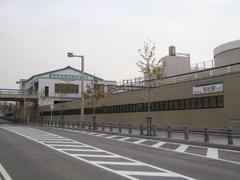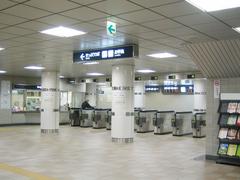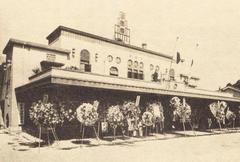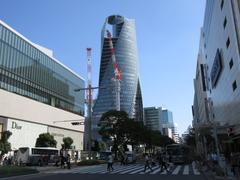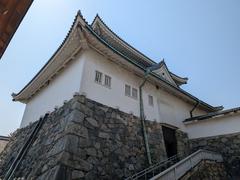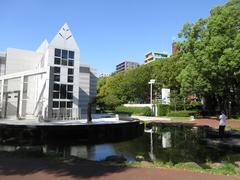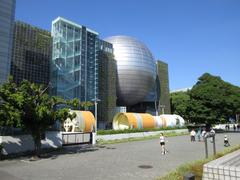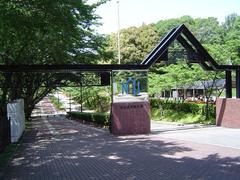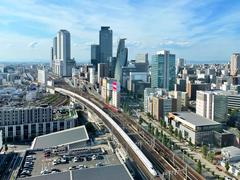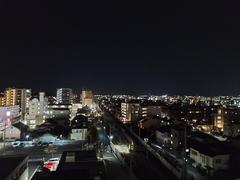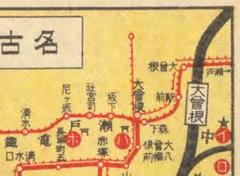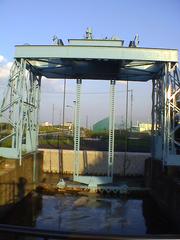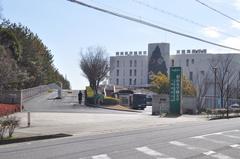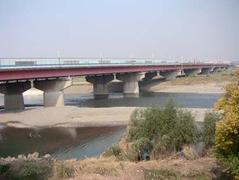Comprehensive Guide to Visiting Osu Kannon Nagoya, Japan
Date: 17/07/2024
Introduction
Osu Kannon, officially known as Ōsu Kannon (大須観音), is a significant Buddhist temple located in Nagoya, Japan. Renowned for its historical importance, striking architecture, and vibrant cultural significance, Osu Kannon is a must-visit destination for tourists and spiritual seekers alike. Initially constructed in the early 14th century in Hashima, Gifu Prefecture by Buddhist monk Shōnin Nōshin, the temple was relocated to its current site in Nagoya in 1612 by Tokugawa Ieyasu to protect it from frequent flooding (Japan Guide; Nagoya Info).
Dedicated to Kannon, the Buddhist deity of mercy and compassion, the temple features a blend of traditional Japanese and Buddhist architectural styles. Visitors can admire the main hall’s impressive red-painted wooden structure, explore the five-story pagoda, and view a revered statue of Kannon said to have been carved by the Buddhist saint Kōbō Daishi (Osu Kannon Official Site). The temple also houses a valuable collection of historical texts and artifacts, including the oldest extant copy of the Kojiki, Japan’s oldest chronicle (Nagoya Travel Guide).
Osu Kannon’s vibrant surroundings, including the bustling Osu Shopping District and the monthly flea market, offer visitors a unique blend of historical, cultural, and modern attractions. Whether you’re interested in exploring ancient temples, shopping for unique souvenirs, or enjoying traditional Japanese cuisine, Osu Kannon has something for everyone. This comprehensive guide will provide essential information about the temple’s history, visiting hours, ticket prices, travel tips, and nearby attractions, helping you to make the most of your visit.
Table of Contents
- [Introduction](#introductionintroduction)
- [Osu Kannon Temple in Nagoya](#osu-kannon-temple-in-nagoyaosu-kannon-temple-in-nagoya)
- [Origins and Early History](#origins-and-early-historyorigins-and-early-history)
- [Relocation to Nagoya](#relocation-to-nagoyarelocation-to-nagoya)
- [Architectural Evolution](#architectural-evolutionarchitectural-evolution)
- [Visitor Information](#visitor-informationvisitor-information)
- [Nearby Attractions](#nearby-attractionsnearby-attractions)
- [Special Events and Guided Tours](#special-events-and-guided-toursspecial-events-and-guided-tours)
- [Photographic Spots](#photographic-spotsphotographic-spots)
- [FAQ](#faqfaq)
- [Conclusion](#conclusionconclusion)
- [References](#referencesreferences)
Osu Kannon Temple in Nagoya
Origins and Early History
Construction and Initial Purpose
Osu Kannon’s origins date back to the early 14th century during the Kamakura period. It was initially constructed in 1333 by Shogun Ashikaga Takauji in the city of Hashima in Gifu Prefecture. The temple was dedicated to Kannon, the Buddhist deity of mercy and compassion, and was named after its location in Osu-go, a district in Hashima.
Historical Significance
The temple played a significant role in spreading Buddhism in the region and has been a spiritual center for centuries. Its historical importance is reflected in the various artifacts and scriptures that have been preserved over time.
Relocation to Nagoya
Reasons for Relocation
In 1612, during the Edo period, the temple was relocated to its current site in Nagoya by Tokugawa Ieyasu, the founder of the Tokugawa shogunate. This move was part of a broader strategy to consolidate power and protect the region from potential uprisings.
Impact on Nagoya
The relocation also aimed to integrate the temple into the burgeoning urban landscape of Nagoya, which was becoming an important political and economic center. Osu Kannon quickly became a significant cultural and religious landmark in the city.
Architectural Evolution
Architectural Style
The original structure of Osu Kannon was built in the traditional Japanese architectural style known as “wafu”. Over the centuries, the temple has undergone several renovations and restorations to preserve its historical integrity.
Renovations and Restorations
Significant renovations took place in the 1970s to restore the temple to its former glory. These efforts have ensured that Osu Kannon remains a stunning example of traditional Japanese architecture.
Visitor Information
Visiting Hours and Ticket Prices
Osu Kannon Temple is open daily from 6:00 AM to 5:00 PM. Admission to the temple is free, but donations are appreciated to help maintain the site.
Travel Tips
- Best Time to Visit: Early morning or late afternoon to avoid crowds.
- Photography: Photography is allowed but please be respectful of worshippers.
- Accessibility: The temple is wheelchair accessible, and there are ramps and elevators available.
Nearby Attractions
- Osu Shopping District: A bustling area with shops, restaurants, and cafes.
- Nagoya Castle: A historic site located a short distance from the temple.
- Atsuta Shrine: Another significant religious site in Nagoya.
Special Events and Guided Tours
Osu Kannon hosts various traditional festivals and events throughout the year. Guided tours are available in multiple languages and can be booked in advance through the temple’s official website.
Photographic Spots
The temple grounds offer numerous picturesque spots, including the main hall, the pagoda, and the surrounding gardens.
FAQ
- What are the visiting hours of Osu Kannon Temple? The temple is open daily from 6:00 AM to 5:00 PM.
- How much do tickets to Osu Kannon Temple cost? Admission is free, but donations are appreciated.
Conclusion
Osu Kannon Temple in Nagoya is a must-visit for anyone interested in Japanese history, culture, and architecture. With its rich history, beautiful architecture, and vibrant surrounding area, it offers a unique and enriching experience. Plan your visit today and immerse yourself in the spiritual and cultural heritage of this iconic site.
